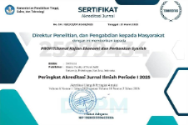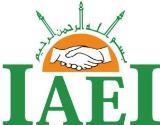PASAR PERSAINGAN SEMPURNA DAN PASAR PERSAINGAN TIDAK SEMPURNA DALAM PERSPEKTIF ISLAM
Authors (s)
(1) * Ni’matul Fitria Mukaromah
 (Fakultas Ekonomi dan Bisnis Islam, Institut Agama Islam Negeri Ponorogo)
(Fakultas Ekonomi dan Bisnis Islam, Institut Agama Islam Negeri Ponorogo) Indonesia
(2) Temmy Wijaya (Fakultas Agama Islam Universitas Nurul Jadid Paiton Probolinggo)
Indonesia
(*) Corresponding Author
AbstractConceptually, this research describes the structure between the perfect competition market and the imperfect competition market which is also seen from an Islamic perspective, which of course also talks about the structure of the perfect competition market and imperfect competition market, as well as several things about this. Market, which incidentally is a meeting place for buyers and sellers to carry out buying and selling transactions of goods and services, as well as a place for the community to meet the needs and drivers of the community's economy. There are various kinds of markets, for a broad picture the market is divided into perfect competition markets, and imperfect competitive markets in which there are still divisions such as monopolistic, monopolistic, and oligopolistic markets. A perfectly competitive market in which there are many sellers and buyers of similar goods. Meanwhile, the imperfect competitive market contains only one seller or a few sellers. In this report, some information is generated regarding the two types of markets, such as the meaning, differences in the perfect competition market and imperfect competition market, the advantages and disadvantages of perfect and imperfect competition markets, market mechanisms, etc. The data collection method used in this study was to collect data from related web literature studies |
Keywords
Full Text: PDF
Refbacks
- There are currently no refbacks.
Copyright (c) 2020 Ni’matul Fitria Mukaromah, Temmy Wijaya
This work is licensed under a Creative Commons Attribution-NonCommercial-ShareAlike 4.0 International License.
Published by Islamic Faculty of Nurul Jadid University, Probolinggo, East Java, Indonesia.





.jpg)



